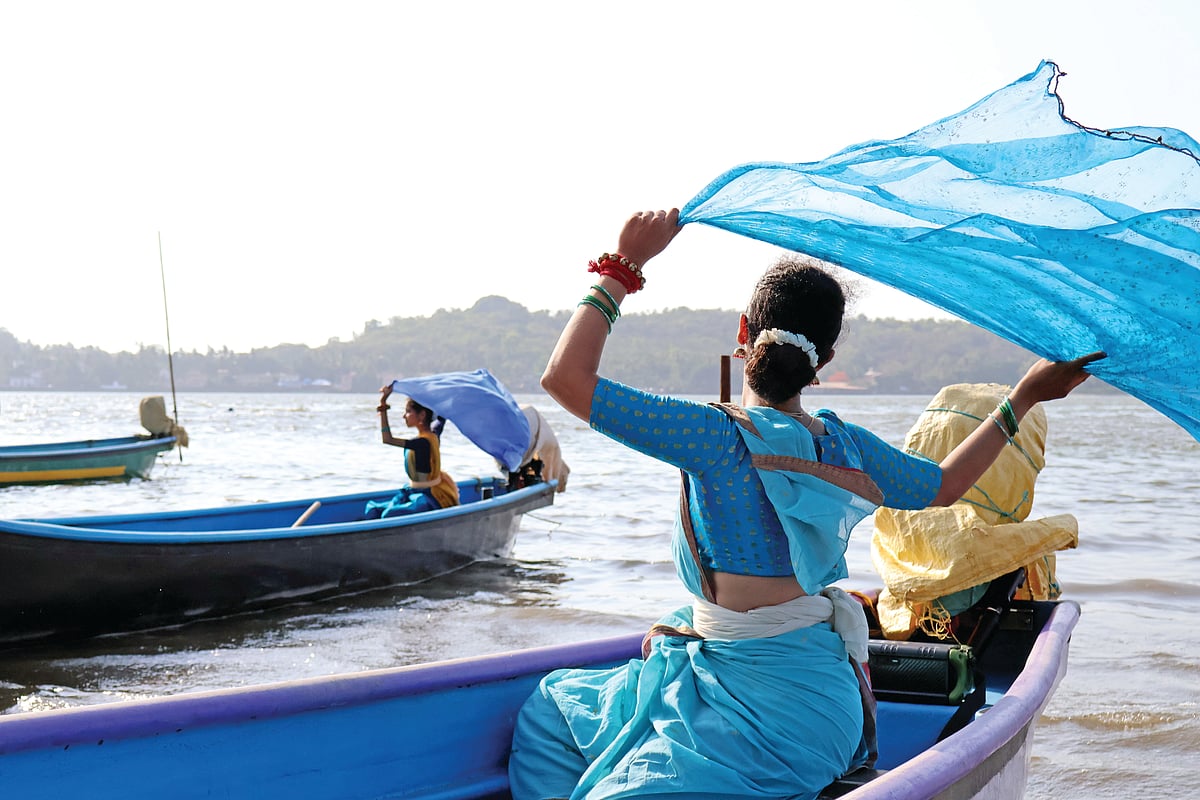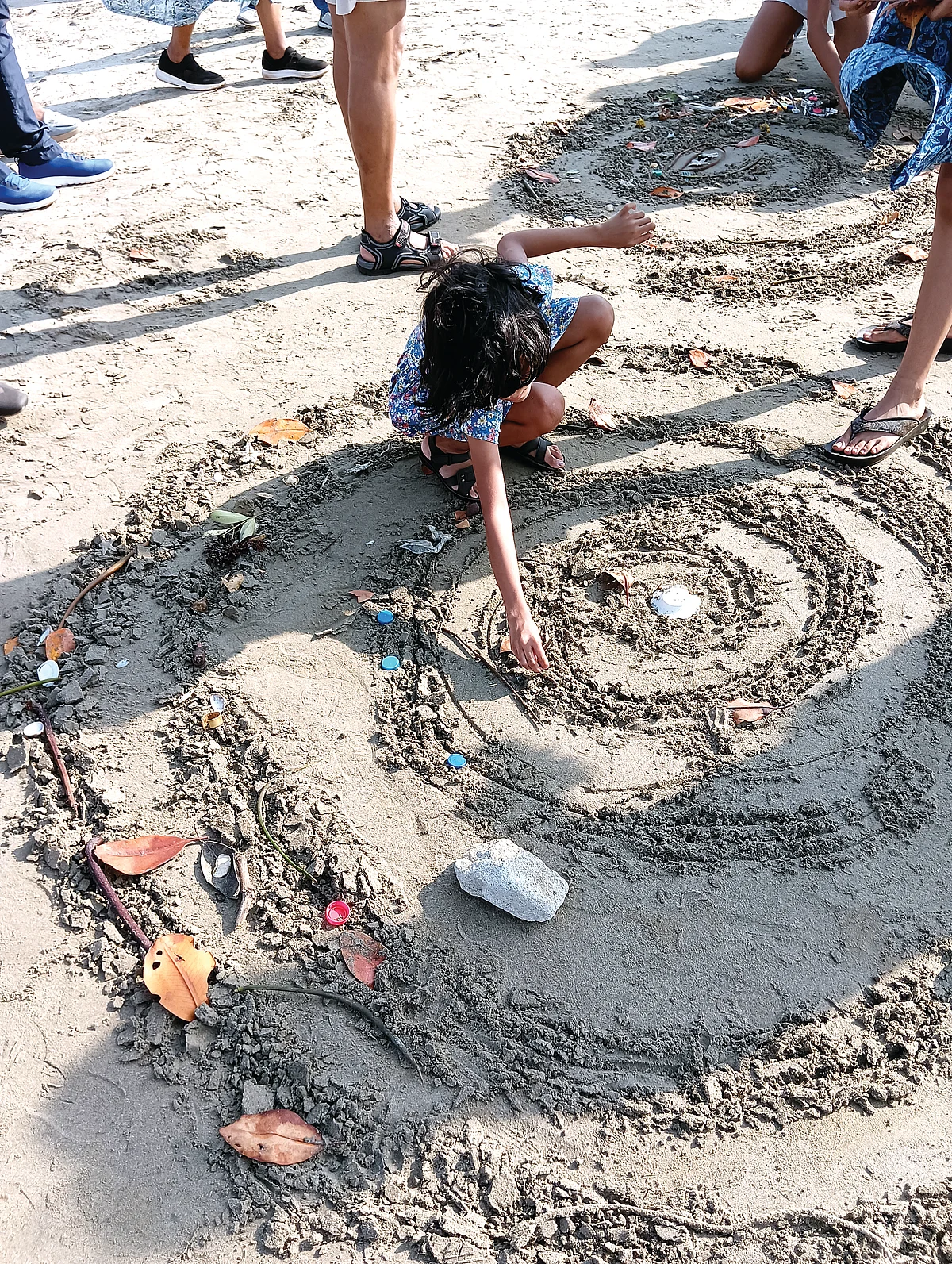Sometimes it takes a festival to save a river
Venita Coelho on Goa’s unusual fightback against the proposed diversion of the Mandovi river

Two months ago, with the Karnataka elections on the horizon, desperate to curry political goodwill, the central government announced that Karnataka would be given the right to divert the rivers of the Mhadei (known in Goa as the Mandovi).
This is a long-running dispute, with Goa battling Karnataka’s attempts to dam the river for some time. The Mhadei Bachao Andolan dates back to the 1980s. The BJP government in Goa didn’t bother to make more than a token protest when, at one stroke, the survival of the river and all that she nurtures was imperilled.
This comes at a time when rivers are at risk across India. In various states, grassroots movements are trying to explain to governments that altering the course and headwaters of rivers is asking for trouble. Throw in climate change, dams, pollution and what you are staring at is lack of water, lack of food, and lack of livelihoods for millions in the years to come. This worse-than-dystopian
scenario is exacerbated by the fact that rivers flow across several states and there is no objective mechanism in place to decide how waters will be distributed without one state being prioritised over the other. With scientific rationale replaced by political wiles, it is left to people on the ground to speak up.
So, what do you do when government policies are set to kill a river that is the lifeline of a whole state? You protest—by holding a celebration. You bring together artists, singers, musicians, poets, environmentalists and stage an event on the banks of the river, drawing thousands and making it abundantly clear that you stand against her destruction.
Choosing the Gandhian approach where the means is as important as the end, artist Miriam Koshy planned one of the most unusual ways to fight back that India has seen in a long time. “We didn’t want a single day’s show of strength. We wanted people to really connect, really understand what was at stake. We wanted to engage communities and lay the foundation for a campaign that would last for a long, long time. So we chose the best route—art.’
As an artist, Koshy works with gauze, a medium that has connotations of both fragility and healing. She created seven ‘River Goddesses’ that trace the journey of the river from Mahadevi at her source to Mhadei as she enters Goa to Mandovi as she reaches the sea. Koshy put out a call for rakhondars (guardians) of the river to participate in a celebration that would make it clear that
the river had protectors. The idea of the Mhadei Aamchi Mai (Mhadei is our mother) festival was born. A festival that would engage communities and highlight the critical relationship between the river, the land and the people.
The Earthivist Collective and the Goa Heritage Action Group took charge of putting it together. Artists of every hue were invited to join in.
In the spirit of community engagement, a series of free events was held before the festival, so that anyone and everyone could understand what was at stake.
Aarti Das took participants on a ‘Trees of Mhadei’ walk to introduce the multitude of species supported by a single river. The ‘Birds of Mhadei’ walk hosted by Omkar Dharwadkar identified the hundreds of birds that flourish in the estuary of the Mhadei.
The ‘Plants of Mhadei’ walk by Dr Maryanne Lobo explored the links between plant life, soil erosion and climate change. Urban Sketchers of Goa came out to paint the river that supports thousands of livelihoods.
From fishermen to mussel collectors, from the fish and the birds to the plants—all face devastation if the diversion of the waters is allowed. A mere 2 per cent increase in the salinity of a river spells disaster, and the diversion will lead to more than that.
Sometimes it takes a festival to save a river. Mhadei Aamchi Mai made art the thread that bound people together. Poems, paintings, installations and music became both a means to honour the river and an act of resistance. Held along the banks of the river in Panjim on May 20, it became a joyous fiesta in true Goan style.
Hema Sardesai sang a song composed for the occasion. Inter-disciplinary Goa-based artists Pushpanjali Sharma and Gautam Nima performed an anthem for the river. Matteo and his jazz band played. Impana and her troupe danced a tribute to the river. That Book Store organised black-out poetry (apt as it uses erasure as a technique), and Bookworm displayed the artwork they had created in collaboration with river-based communities across Goa.

Salil Chaturvedi and Pragya Bhagat read poetry, and children as young as eight performed for the river. Making the river the centre and humans the bit players was a way of reminding us of our actual place in the scheme of things. All the artists offered their performances and works as a tribute to the river herself, the mother who has shaped their identity and culture, and sustains the land they inhabit.
“This is also a struggle to save our identity,” said Damodar Mauzo, writer and Jnanpith award winner. While well-known eco-warrior Dr Claude Alvares made the point, “Mhadei belongs to India as well, so besides Goans, Indians as a whole must protest. Why can’t we let nature be, why must we continue to torture nature beyond repair in this fashion? Do we believe there will be future generations and that they need to see rivers flowing, as we have done in our lifetimes?”
The on-site festival was paralleled by an online festival where the work of dozens more artists was featured. And it doesn’t end there. The campaign is set to continue with a zatra—a travelling exhibition of art that focuses on and explains the environmental issues that Goa faces. A zatra is a celebration common to communities across Goa, and this one will go from village to village, carrying important messages not through gloom and doom but with song and dance. A series of other community-engagement events are planned in a bid to grow more protectors for the state’s precious resources.

As the sun blazed down on Miramar beach, thousands held hands to form a kilometres-long human chain. A large part of the gathering comprised those who have learnt to love Goa. From Italian jazz singers to German and Russian artists to local Goans, the mix on the beach was across nationalities.
Whole families had turned up and entire communities of fishermen were present. “Mhadei Aamchi Mai!” was the slogan they chanted. To save a mother is an emotion that people across India recognise. The act of holding hands in solidarity became a moving statement of protection and opposition. As the destruction of rivers and natural resources unfolds across India, many more hands will be needed to reach out and fight for the future of our children.
(VENITA COELHO is a Goa-based screenwriter, novelist and artist who works across age groups and genres)
Follow us on: Facebook, Twitter, Google News, Instagram
Join our official telegram channel (@nationalherald) and stay updated with the latest headlines
